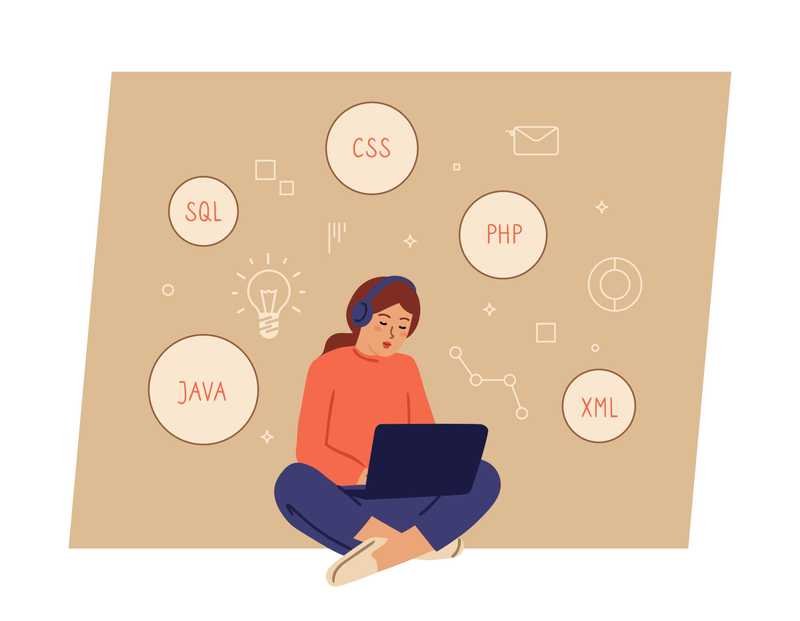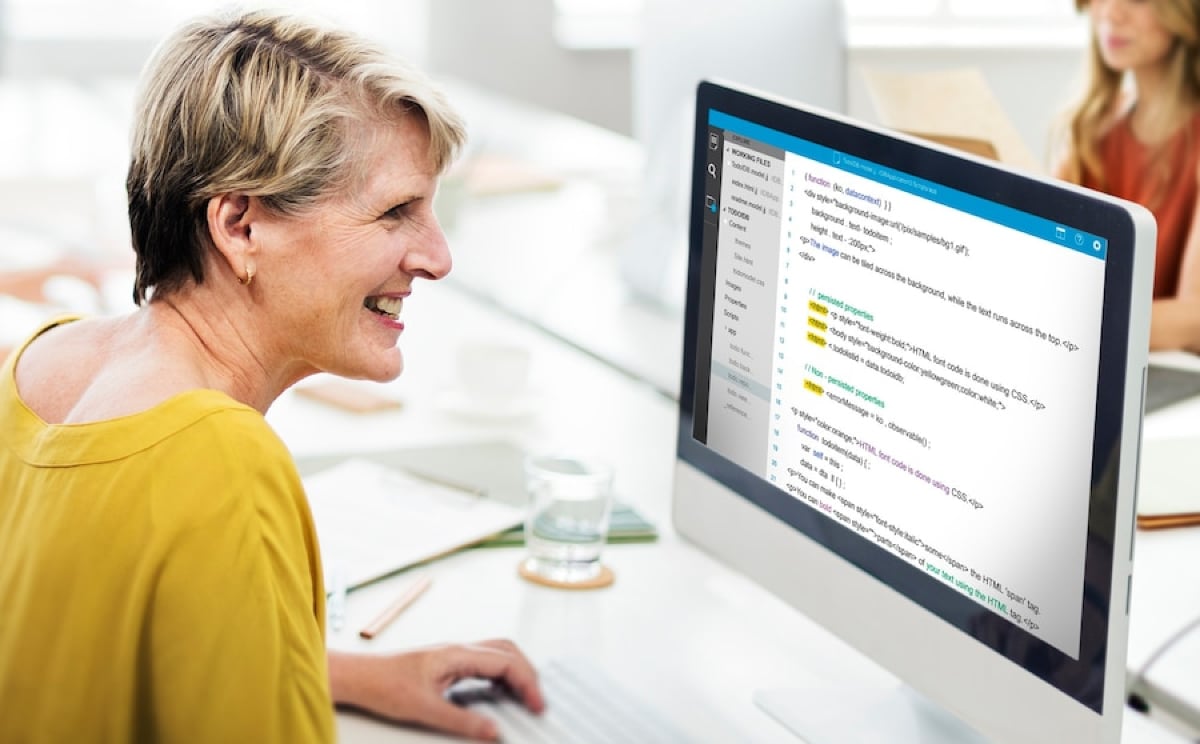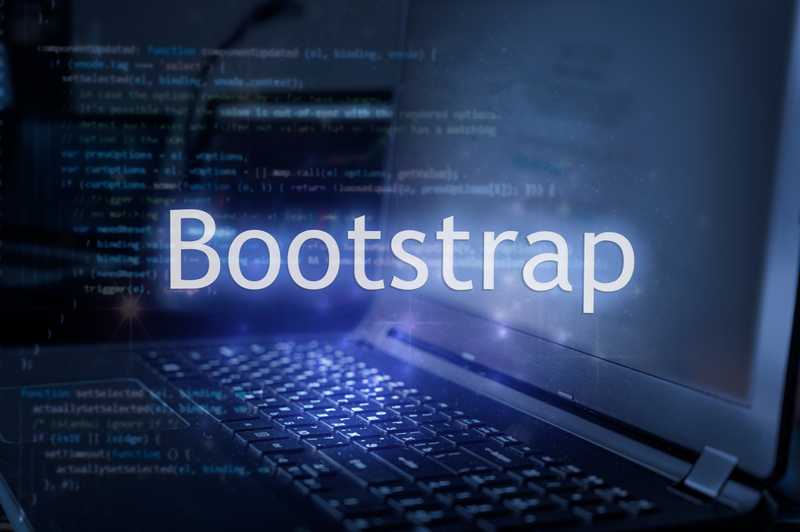It’s no secret that STEM professions—shaped by years of gender and racial bias—lack diversity. Software engineering is no exception. Women currently hold around 25% of all computer science-related jobs, and only 14% of software engineering roles, with many female programmers having to work against unfair stereotypes of women not being technical-minded or uninterested in coding.
The irony, of course, is that the pioneers of computer science were women—Ada Lovelace is considered the first computer programmer; Grace Hopper was one of the first programmers of the Harvard Mark I computer; Ida Rhodes and Betty Holberton designed the C-10 programming language; Margaret Hamilton helped developed the on-board flight software for NASA’s Apollo program. In other words, women have always had what it takes to make profound advancements in computer science and software engineering.
Leaders in the tech industry, who in recent years have awoken to the value that women bring to the workforce, have made it their mission to diversify their hires and teams, overhaul toxic cultures, and prevent attrition.
Many women software engineers have also taken matters into their own hands, creating opportunities and support networks for women who are either considering or have already embarked on their technology careers, supporting young women through mentorships, and clearing some of the hurdles that stand in the way of women advancing in the technical workforce.
Women are making meaningful headway in the field of software engineering. Read on to learn more about the challenges women are overcoming and the opportunities that are helping close the gender gap.
How Can We Get More Women Into Software Engineering?
Many of the challenges that stand in the way of women building long and satisfying careers in software engineering are systemic and have proven difficult for organizations to dismantle. The good news is that many companies, industry leaders, and women have stepped up to the challenge and are making a meaningful difference.
- Creating more supportive work environments. Research has found that many women leave the tech industry because of unsupportive work environments—this can include a lack of role models, a lack of transparency when it comes to performance evaluations and promotions, and the sense that they have to sacrifice their personal lives in order to succeed. While ping pong tables and boozy happy hours may have once been the norm at many tech companies and startups, managers are realizing that these kinds of “perks” create a monoculture that can often alienate women, and are now recalibrating their organizations to be more inclusive.
- More mentorship and support. When people think of mentorship for women in software engineering, they often default to thinking that the task should fall on women to mentor other women. But this leads to the few women in technical roles shouldering most of the work. Instead, research has found that male mentors are just as important in offering guidance, support, and insight into the profession. Mentors of all stripes also play a valuable role in advocating for women, elevating the status of their peers, carving out space for newcomers to be heard, and influencing an organization’s culture.
- Work-life flexibility. The top reason women in tech cite for staying in their roles is that they enjoy the work. The second? Work-life flexibility. “Time and time again, studies show that flexibility draws more women, and retains them, in the workplace,” according to Manon DeFelice, founder of Inkwell. “In a Pew Survey, 70% of women with families said that having a flexible work schedule was extremely important to them. The inverse is also true: Where flexibility is lacking, so too are highly accomplished women.”
- Parental leave. Parental leave and support for new parents reentering the workforce plays a huge role in preventing attrition. A study by the Harvard Business Review found that 41% of women in tech roles will leave the industry after their tenth year on the job, and that many women entering their thirties often plan their exit. Many factors contribute to the churn, from sexist workplaces to pay discrepancies, but the lack of support for parents is an oft-cited factor. Many big tech companies have begun addressing this by offering months-long maternity and paternity leave policies for new parents, providing adoption and surrogate support, and covering fertility treatments and egg freezing. Some companies, like Amazon, have also launched programs that allow new parents to gradually increase their workload when they return, or to work flexible, remote hours.

What Opportunities Are Available for Women in Coding?
Every facet of software engineering, whether it’s engineering management, front-end development, back-end development, dev ops, or cybersecurity engineering, benefits from diversity at all levels. Recognizing some of the barriers to entry that can deter women from careers in the profession or discourage them from climbing the ranks, software engineering leaders have launched conferences and initiatives to support women from the time they’re in school through to when they’re in the workforce.
Some of the more notable conferences, organizations, meetups, and networking opportunities include:
- AnitaB.org
- Society of Women Engineers
- Women In Computing
- Silicon Valley Women In Engineering
- Johnson Women In Tech Conference
- She Summit
- Tech Up For Women
- Women In Cybersecurity
- Women In Tech Summit
- Global Tech Women
- Girls In Tech
- Women Who Code
- Black Girls Code
Get To Know Other Software Engineering Students
Geraldo Gomes
Software Engineer at Affirm
Bryce Dunn
Associate Software Engineer at Egen
Matthew Dillon
Front End Developer at LaunchBadge
Scholarships and Grants for Women in Software Engineering
A growing number of organizations have thrown their support behind helping tech companies achieve gender diversity, namely through offering scholarships, fellowships, grants, and outreach programs. Software engineering scholarships are available for undergraduate and graduate students who are pursuing computer science, computer programming, web development, or related fields, and there are also paid internship programs that aim to give students from historically underrepresented groups hands-on industry experience.
On the online courses/bootcamp front, Springboard has partnered with Women Who Code to offer ten scholarships worth $1,000 each to women who enroll in Springboard’s Data Science Career Track, Software Engineering Career Track, or the Machine Learning Career Track.
How Does Springboard Support Women Entering Software Engineering?
Students who have completed Springboard’s Software Engineering Career Track have gone on to work as engineering professionals at companies like Google, Facebook, Apple, Amazon, LinkedIn, Pandora, and Dell. Many graduates of the program credit Springboard’s three-pronged approach to their success:
- Ensuring students learn foundational software engineering skills
- Giving every student hands-on experience with real-world projects
- Comprehensive mentorship.
“I really enjoyed Springboard, from the mentorship, career counselors, curriculum, and the projects,” said Springboard graduate Jasmine Kyung, who is now a Python engineer. “I enjoyed the freedom to pick whatever project I wanted to do and the support I received from my mentors, who helped me find a job even before I finished the program.”
Women Leading the Way in Software Engineering
Despite the poor diversity numbers in the field of software engineering, women occupy some of the most influential and pioneering roles in the profession. A few industry leaders include:
- Amy Hurlbut — Senior Vice President of Software Engineering at Salesforce
- Amy Truong — Vice President of Engineering at Patreon
- Arquay Harris — Senior Director of Engineering at Slack
- Caitlin Smallwood — Vice President of Data Science and Engineering at Netflix
- Cathy Edwards — Vice President of Engineering at Google
- Elaine Teoh — Vice President of Engineering at Flexport
- Erica Joy Baker — Director of Engineering at GitHub
- Maria Zhang — Vice President of Engineering at LinkedIn
- Monica Bajaj — Senior Director of Engineering at Workday
- Ning Li — Vice President of Engineering and Product at Facebook
- Sharmila Ravi — Managing Vice President of Software Engineering at Capital One
- Tamar Bercovici — Vice President of Engineering at Box
“Every software engineer struggles a lot, even if they don’t show it,” Anna Carey, a software engineer at Artsy said in a blog post. “If I could shake my 18-year-old self, full of self-doubt and about to give up on computer science for what she thought would be forever, I would tell her: You have everything you need to make it as an engineer if you’re ready to persist when you feel lost and become really good at Google.”
And if a prospective software engineer is concerned that they might not be cut out for the profession because their strengths lie in the humanities, Carey added: “Your communication skills and leaning toward the humanities don’t discount you as a developer, but actually make you a stronger engineer.”
Since you’re here…
No one wakes up knowing how to code – they learn how to code. Tens of thousands of students have successfully learned with our courses, like our Software Engineering Bootcamp. If you’re a total newbie, our Software Engineering Career Track Prep Course will be a perfect fit. Let’s do this!






